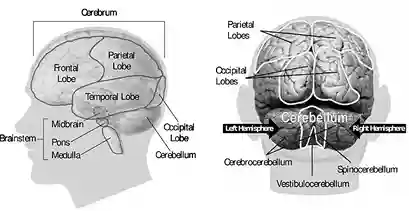Encephalomalacia
Encephalomalacia or brain softening is a condition caused by inflammation or bleeding in certain areas. This brain softening usually occurs in the leukoencephalomalacia or white matter of the brain and polioencephalomalacia or gray matter of the brain.
This condition can be experienced by anyone of any age, from fetuses to the elderly. Encephalomalacia can cause brain changes with varying clinical manifestations. Almost all cases reported in infants and children are usually associated with neurological disorders.
Symptoms of Encephalomalacia
Symptoms of brain softening vary widely, depending on the part of the brain affected. Some common symptoms experienced by sufferers include:
- Vertigo or a spinning sensation.
- Loss of vision or blindness.
- Persistent and worsening headaches due to increased intracranial pressure (pressure within the skull).
- Decreased consciousness, ranging from drowsiness to coma.
- Can’t speak.
- Weakness or paralysis of half of the body on the left or right side.
- Seizures experienced in some parts of the body. If the condition gradually worsens, seizures can be experienced throughout the body.
Causes of Encephalomalacia
Encephalomalacia or brain softening occurs when certain brain tissues do not receive enough oxygen from the blood. As a result, the brain tissue will die and soften. Some underlying causes include:
- Ischemic stroke or stroke caused by blockage of blood vessels in the brain, so that the brain does not receive sufficient blood supply.
- Brain hemorrhage, which is the rupture of blood vessels in the brain tissue which causes tissue damage or softening of the brain due to not getting enough oxygen.
- Inflammation of the brain tissue caused by infection of the brain tissue (encephalitis) or the membranes covering the brain (meningitis). The cause itself is organisms such as bacteria, viruses, and fungi.
While in newborns or fetuses in the womb, brain softening is triggered by reduced oxygen supply to the brain due to reduced blood supply. This condition is generally caused by:
- Asphyxia which is a condition where the baby’s brain tissue lacks oxygen supply due to poor umbilical cord conditions.
- Inflammation of the brain or meninges which is usually caused by TORCH infection (Toxoplasmosis, Rubella, Cytomegalovirus, and Herpes simplex) during pregnancy.
Risk Factors for Encephalomalacia
Apart from these main causes, encephalomalacia is also triggered by several risk factors, such as:
- Traumatic brain injury, such as a head injury caused by a sharp blow.
- Have ever had a brain surgical procedure?
- TORCH infections in pregnant women.
- Suffering from a stroke.
Diagnosis of Encephalomalacia
To diagnose encephalomalacia, the doctor will conduct an interview about symptoms, medical history, trauma history, or previous brain surgery history. Then, the doctor will continue with a number of physical examinations with the following procedures:
- MRI, which is an examination of body organs carried out using magnetic and radio wave technology.
- CT scan of the brain, which is an examination using X-rays to obtain three-dimensional images of the skull, brain, and other necessary parts.
Both examinations can find out in detail the picture of brain tissue. In newborns, the disease is characterized by cavities where brain tissue should be. While in adults, brain softening is characterized by reduced brain volume, especially in the frontal and temporal areas.
Encephalomalacia Treatment
So far, there has been no treatment to overcome the disorder. This is because there is no treatment that can make the damaged tissue work again. As a first step, doctors usually detect the underlying cause behind the change in brain consistency.
In extreme cases, the damaged brain substance can be surgically removed. However, the consistency of the brain will be significantly altered due to the removal of soft brain matter. It is still unclear whether the brain can return to normal after the procedure.
Prevention of Encephalomalacia
Until now, there is no direct prevention to avoid someone from encephalomalacia. Preventive efforts that can be done are only avoiding conditions that increase the risk. Here are some of these efforts:
- If you have a risk of stroke, such as hypertension, coronary heart disease, and other chronic diseases, it is recommended to have regular health checks.
- Prevent serious head impacts, such as wearing a safety helmet when driving, exercising, or in construction areas.
- Make sure the floor you are stepping on is not slippery.
- Wear proper footwear when traveling to avoid slipping easily.
- Perform routine pregnancy checks during pregnancy.
- Perform TORCH immunization on pregnant women.

